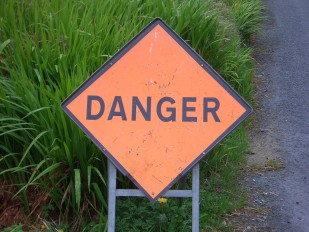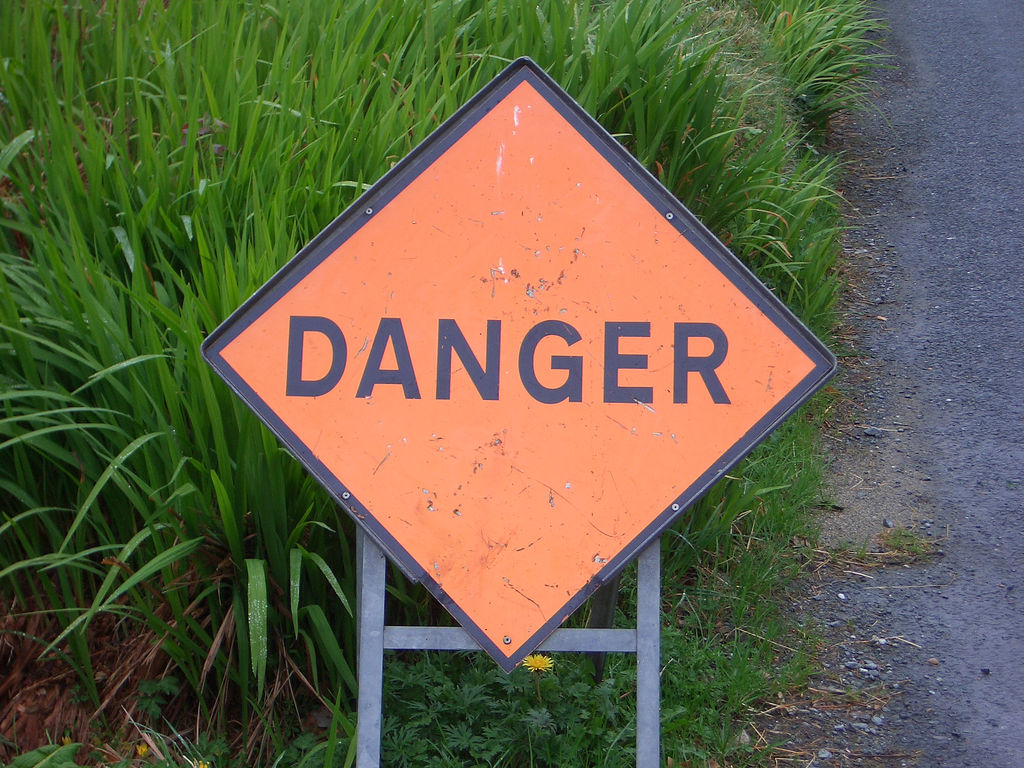 Photo: cocovanThe Environmental Protection Agency today said it has determined that planet-warming greenhouse gases pose a danger to public health and welfare. The long-expected finding, set in motion two years ago by a Supreme Court ruling, moves the Obama administration one step closer to regulating carbon dioxide emissions from a number of sources across the country. But it leaves unanswered questions about how the agency will go forward and which industries will be most affected.
Photo: cocovanThe Environmental Protection Agency today said it has determined that planet-warming greenhouse gases pose a danger to public health and welfare. The long-expected finding, set in motion two years ago by a Supreme Court ruling, moves the Obama administration one step closer to regulating carbon dioxide emissions from a number of sources across the country. But it leaves unanswered questions about how the agency will go forward and which industries will be most affected.
The EPA reached the decision last month, and earlier this week the agency’s determination cleared White House review. Today’s announcement, EPA Administrator Lisa Jackson has said, will “trigger the beginnings of regulation of CO2 for this country.”
Industry groups are wringing their hands about what it will mean to have greenhouse gases regulated under the Clean Air Act, and enviros are chomping at the bit for the agency to get to work. While groups across the spectrum would prefer that Congress pass a new climate bill to address the matter, in the absence of that, the EPA is compelled to start regulating with the laws already on books.
“There’s no time left to waste,” said David Doniger, policy director of the Natural Resources Defense Council’s climate center. “We want the EPA to do what it can under the existing Clean Air Act, because that’s what the law is today … We have a problem ahead of us that we’re long overdue in dealing with.”
What now?
There will be a 60-day public comment period on the EPA finding itself (here’s how to comment), after which it will be entered in the Federal Register, the government’s official publication for rules and regulations. The agency would then be legally required to start regulating CO2 emissions, though the EPA can decide the timing, sequence, and scope of any regulations.
The EPA could regulate a wide range of polluting entities, but the agency is likely to focus first on two main sources of pollution: cars and stationary pollution points like power plants and major industrial sources, including chemical and cement manufacturers. “The EPA must go forth and regulate,” David Bookbinder, chief climate counsel at the Sierra Club, told Grist. “Those would come at the front of the regulatory train.”
Environmental experts working in the field, including Bookbinder, expect that the EPA will go after automobiles first, since they’re perceived as the lower-hanging fruit. The agency is already expected to render a decision by the end of June on whether or not to grant California a waiver so it can set emissions standards for automobiles that are tougher than the federal standards. The California rules call for a 30 percent reduction in global-warming emissions from new vehicles by 2016.
Regulating auto emissions is complicated by the fact that the National Highway Traffic Safety Administration is already charged with setting new standards for cars and light trucks, under the Corporate Average Fuel Economy (CAFE) system. NHTSA is working on fuel-economy standards for the 2012 year, which are due out before March 31, 2010. It’s expected that the EPA and NHSTA will work together to devise a single standard to govern cars, and that could come as early as August, environmental experts predict.
Automakers, surely, would like to see a uniform standard for the entire country.
“We recognize that greenhouse gas emissions from automobiles need to be reduced,” said Charles Territo, a spokesperson for the Auto Alliance, an industry group representing a number of major car makers. “At the end of the day, what’s most important is that we have a single, national standard that is achievable, but that is aggressive, and cost-effective.”
He chafed at the idea of cars getting the regulatory crackdown first, noting that they account for 20 percent of carbon dioxide emissions — substantially less than emissions from stationary sources. “There has to be a comprehensive, multi-sector policy in place that recognizes that if CO2 is to be regulated, that it needs to take into account all sources,” said Territo. “We’re already regulated. This industry has more experience with carbon dioxide regulation than any other. Through the CAFE program, we effectively have been capped since 1975.”
After cars, the other big target will be power plants and factories. Coal-fired power plants alone account for 40 percent of emissions. Environmental law experts are predicting that rules for these major point sources could come within 12 to 18 months. Bookbinder predicts the EPA will begin its work on stationary sources by the end 2009, with a notice of proposed rules, and regulations in place in early 2010.
Industry’s tack
Any CO2 regulations coming out of EPA will likely be met by a flurry of lawsuits from the regulated industries, meaning it could take a lot longer for those regulations to take effect. The endangerment finding will “set the stage for an economic train wreck and a constitutional crisis,” wrote the Competitive Enterprise Institute and seven other “free market” groups in a letter sent to EPA’s Jackson on Wednesday.
“If you were too comprehensively regulate greenhouse gases under the existing Clean Air Act, that would impose a substantial cost and insufficient flexibility for the regulated community,” said Scott Segal, director of the Electric Reliability Coordinating Council, which lobbies on behalf of power companies like Southern Co. and Duke Energy Corp.
Segal and others representing the industry side suggest that regulation through this system will inevitably lead to regulation of every emission source imaginable. “It would draw in every apartment complex, every hospital, every school, every church. It would transform the Clean Air Act into a major revamping of American society, from small businesses to nonprofits. … I don’t think the authors of the Clean Air Act ever intended for it to be used in that fashion.”
Jackson rejected this idea recently, noting, “It’s a myth that we’re at a horrible fork in the road, where the EPA is going to regulate cows, Dunkin’ Donuts, Pizza Huts, and baby bottles.”
And despite his own suggestion that this could mean the EPA has to cap emissions from your local food pantry, even Segal is optimistic that the Obama administration will take a more cautious approach to regulation. “It seems clear to me that the administration will do what they can to limit the damage of an endangerment finding under the Clean Air Act,” he said, pointing to Obama’s recent comments at a press conference that concerns about impacts on consumers should be taken into account in cutting emissions.
For now, Segal is giving Obama the benefit of the doubt, waiting to see if the EPA will craft a regulatory scheme that can “adequately contain costs.” “Everybody deserves the opportunity to develop what their regulatory policy is going to be, and then we’ll participate in that vigorously,” said Segal. “And if at the end of the day it doesn’t yield something that’s reasonable, we’ll have to exercise the full range of legal options.”
What about Congress?
Of course, the 800-pound gorilla in the regulatory room is Congress. Nearly everyone — from the deepest greens to the industry lobbyists — agrees that it would be better to have new, carbon-dioxide-specific legislation guiding how the country makes emissions reductions. But there’s no promise that Congress is going to be able to get that legislation passed through both chambers anytime soon. House Democrats are already at work on a bill that they expect to pass this summer, but chances of the Senate getting climate legislation approved this year aren’t nearly as strong.
A bill passed out of Congress could choose to leave a large degree of the regulation to the EPA, or could spell out the rules of the game quite specifically. The climate bill the Senate debated last year left a good deal of regulatory prerogative to the agency, while the draft bill the House is currently working on lays out more specific guidelines. The House bill includes emission standards for coal-fired power plants that would supersede any EPA regulation. The bill would limit emissions for plants that come online between 2009 and 2014, and new plants permitted after Jan. 1, 2015 would need to emit less than 1,100 pounds of carbon dioxide per megawatt-hour of output.
Rather than wait for Congress to act, it appears the EPA will move forward with its own rules, even though its actions may eventually be superseded by a new law. “Until Congress acts, EPA is going to go full steam ahead. That’s the bottom line,” said Bookbinder. “They have a legal duty, and they know they have a legal duty. And it will certainly create some pressure on Congress.”
But even Jackson has said the agency would prefer action from Congress. “The best solution, and I believe this in my heart, is to work with Congress to form and pass comprehensive legislation to deal with climate change,” said Jackson in a speech at the Aspen Environment Forum last month. “We hope to avert a regulatory thicket where governments and businesses spend an inordinate amount of time fighting. We are not looking for a doomsday solution.”
NRDC’s Doniger casts aside the notion that the Obama administration is using the Clean Air Act threat as a tool to coerce Congress into action, as some have suggested. Instead, he says the agency is simply acting as the current law requires. “From the president on down, people in the White House really are committed to making progress on curbing global-warming pollution,” said Doniger. “They want a new law, but they’re not just going to run in place and do nothing under the existing law. They’re going to carry it out.”
Regulations from the EPA would surely increase the pressure on Congress. Both legislators and various lobbying interests want the opportunity to create a new law, at least in part because they think it stands a better chance of being malleable. Lawmakers could shape it according to their desires (for better or worse), and companies would at least have the opportunity to offer their input on what rules should look like.
Meanwhile, world leaders continue to work toward a new, international climate treaty that they hope to have ready by the end of 2009. The climate talks in Copenhagen in December loom as a target date for the Obama administration to have something — anything, really — to show for themselves in terms of progress on global warming.
In the absence of a climate bill out of Congress, action from the EPA might be the best sign of progress the White House can offer the international community. An endangerment finding and some proposed regulations for cars and power plants would help establish the administration’s negotiating credentials, whether or not the regulations are final at that point, according to Sierra Club’s Bookbinder.
“The president will have done as much as possible in the 10 months between his inauguration and Copenhagen,” said Bookbinder. “I think the rest of the world is smart enough to say, OK, he’s off and running. He’s heading in the right direction, and Congress is going in the right direction. We can do business with this guy.”
Check out more reactions to the EPA’s finding.And where was mention of the California waiver in today’s news?



